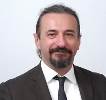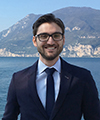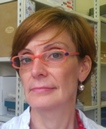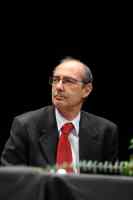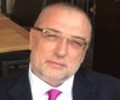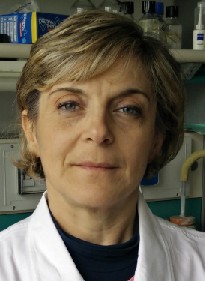Studiare
In questa sezione è possibile reperire le informazioni riguardanti l'organizzazione pratica del corso, lo svolgimento delle attività didattiche, le opportunità formative e i contatti utili durante tutto il percorso di studi, fino al conseguimento del titolo finale.
Calendario accademico
Il calendario accademico riporta le scadenze, gli adempimenti e i periodi rilevanti per la componente studentesca, personale docente e personale dell'Università. Sono inoltre indicate le festività e le chiusure ufficiali dell'Ateneo.
L’anno accademico inizia il 1° ottobre e termina il 30 settembre dell'anno successivo.
Calendario didattico
Il calendario didattico indica i periodi di svolgimento delle attività formative, di sessioni d'esami, di laurea e di chiusura per le festività.
| Periodo | Dal | Al |
|---|---|---|
| Lezioni 2 Anno 1 semestre CLID ROV | 24-set-2020 | 21-nov-2020 |
| Lezioni 3 Anno 1 semestre CLID ROV | 5-ott-2020 | 28-nov-2020 |
| Insegnamento annuale | 12-ott-2020 | 16-apr-2021 |
| Lezioni 1 Anno 1 semestre CLID ROV | 12-ott-2020 | 19-dic-2020 |
| Lezioni 3 Anno 2 semestre CLID ROV | 25-gen-2021 | 5-mar-2021 |
| Lezioni 1 Anno 2 semestre CLID ROV | 8-feb-2021 | 16-apr-2021 |
| Lezioni 2 Anno 2 semestre CLID ROV | 22-mar-2021 | 21-mag-2021 |
| Sessione | Dal | Al |
|---|---|---|
| Sessione Invernale 3 anno | 9-dic-2020 | 22-gen-2021 |
| Sessione Invernale 2 anno | 7-gen-2021 | 29-gen-2021 |
| Sessione Invernale 1 anno | 7-gen-2021 | 5-feb-2021 |
| Sessione Primaverile 3 anno | 15-mar-2021 | 1-apr-2021 |
| Sessione Estiva 2 anno | 7-giu-2021 | 30-giu-2021 |
| Sessione Estiva 1 anno | 13-lug-2021 | 30-lug-2021 |
| Sessione Estiva 3 anno | 19-lug-2021 | 30-lug-2021 |
| Sessione autunnale 1-2-3- anno | 1-set-2021 | 1-ott-2021 |
| Sessione | Dal | Al |
|---|---|---|
| Sessione di Laurea Autunnale 2020/2021 CLID ROV | 1-ott-2021 | 30-nov-2021 |
| Sessione di Laurea Primaverile 2020/2021 CLID ROV | 1-mar-2022 | 30-apr-2022 |
| Descrizione | Periodo | Dal | Al |
|---|---|---|---|
| Tirocinio 2 anno -1 Semestre CLID ROV | Tirocinio 2 anno -1 Semestre CLID ROV | 23-nov-2020 | 22-dic-2020 |
| Tirocinio 2 anno -2 Semestre CLID ROV | Tirocinio 2 anno -2 Semestre CLID ROV | 1-feb-2021 | 19-mar-2021 |
| Tirocinio 3 anno -2 Semestre CLID ROV | Tirocinio 3 anno -2 Semestre CLID ROV | 7-apr-2021 | 9-lug-2021 |
| Tirocinio 1 anno -1 Periodo CLID ROV | Tirocinio 1 anno -1 Periodo CLID ROV | 26-apr-2021 | 28-mag-2021 |
| Tirocinio 1 anno - 2 Periodo CLID ROV | Tirocinio 1 anno - 2 Periodo CLID ROV | 7-giu-2021 | 9-lug-2021 |
| Tirocinio 2 anno -2 Sem 2^ per CLID ROV | Tirocinio 2 anno -2 Sem 2^ per CLID ROV | 1-lug-2021 | 30-lug-2021 |
| Tirocinio 1 anno - Autunno 2021 CLID ROV | Tirocinio 1 anno - Autunno 2021 CLID ROV | 1-set-2021 | 30-set-2021 |
| Tirocinio 2 anno - Autunno 2021 CLID ROV | Tirocinio 2 anno - Autunno 2021 CLID ROV | 1-set-2021 | 30-set-2021 |
Calendario esami
Gli appelli d'esame sono gestiti dalla Unità Operativa Segreteria Corsi di Studio Medicina.
Per consultazione e iscrizione agli appelli d'esame visita il sistema ESSE3.
Per problemi inerenti allo smarrimento della password di accesso ai servizi on-line si prega di rivolgersi al supporto informatico della Scuola o al servizio recupero credenziali
Docenti
 francesco.antonucci@aocardarelli.it
francesco.antonucci@aocardarelli.it
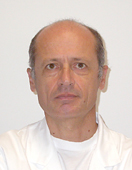
Bisoffi Zeno
 zeno.bisoffi@sacrocuore.it
zeno.bisoffi@sacrocuore.it
 +390456013326
+390456013326
 martina.bonetti@apss.tn.it
martina.bonetti@apss.tn.it
 borghesi.a@mail.apss.tn.it
borghesi.a@mail.apss.tn.it
 elenacampanaro@libero.it
elenacampanaro@libero.it
 fulviocampolongo@gmail.com
fulviocampolongo@gmail.com
 francesca.fontana@univr.it
francesca.fontana@univr.it
 renata.lazzeri@apss.tn.it
renata.lazzeri@apss.tn.it
 mattia.marchiori@univr.it
mattia.marchiori@univr.it
 loredana.pancheri@univr.it
loredana.pancheri@univr.it
Piano Didattico
Il piano didattico è l'elenco degli insegnamenti e delle altre attività formative che devono essere sostenute nel corso della propria carriera universitaria.
Selezionare il piano didattico in base all'anno accademico di iscrizione.
1° Anno
| Insegnamenti | Crediti | TAF | SSD |
|---|
2° Anno Attivato nell'A.A. 2021/2022
| Insegnamenti | Crediti | TAF | SSD |
|---|
3° Anno Attivato nell'A.A. 2022/2023
| Insegnamenti | Crediti | TAF | SSD |
|---|
| Insegnamenti | Crediti | TAF | SSD |
|---|
| Insegnamenti | Crediti | TAF | SSD |
|---|
| Insegnamenti | Crediti | TAF | SSD |
|---|
Legenda | Tipo Attività Formativa (TAF)
TAF (Tipologia Attività Formativa) Tutti gli insegnamenti e le attività sono classificate in diversi tipi di attività formativa, indicati da una lettera.
Fondamenti morfologici e funzionali della vita (2020/2021)
Codice insegnamento
4S000039
Crediti
7
Coordinatore
Lingua di erogazione
Italiano
Offerto anche nei corsi:
- Fondamenti morfologico - funzionali e patologici dell'organismo vivente - ANATOMIA UMANA del corso Laurea in Tecnica della riabilitazione psichiatrica
- Scienze biomediche e azione dei fattori di rischio - ANATOMIA del corso Laurea interateneo in Tecniche della prevenzione nell'ambiente e nei luoghi di lavoro
L'insegnamento è organizzato come segue:
Obiettivi formativi
L’insegnamento si propone di fornire le conoscenze di base riguardanti l’istologia, l'anatomia e la fisiologia umana di tutti gli apparati, in particolare del distretto capo-collo, perché lo studente comprenda l'organizzazione e il funzionamento del corpo umano. MODULO ANATOMIA UMANA Obiettivi formativi: Acquisire competenze di anatomia umana normale di tutti gli apparati. Acquisire la capacità di descrivere l’organizzazione strutturale del corpo umano dal livello macroscopico a quello microscopico, in condizioni di salute e di conoscere le caratteristiche morfologiche essenziali dei sistemi, degli apparati, degli organi, dell’organismo umano, nonché i loro principali correlati morfo-funzionali. MODULO ANATOMIA DEL DISTRETTO CAPO-COLLO Obiettivi formativi: Acquisire competenze di anatomia umana normale del distretto capo-collo. Il corso si propone di educare criticamente lo studente alla conoscenza delle strutture anatomiche del distretto capo-collo, acquisendo la capacità di descriverne l’organizzazione strutturale. • Anatomia del testa/collo • Anatomia ed istologia della cavità orale MODULO FISIOLOGIA UMANA Obiettivi formativi: Il corso di fisiologia si prefigge di fornire agli studenti le conoscenze di base per comprendere il funzionamento del corpo umano, dei suoi meccanismi omeostatici di base. Si parte riprendendo alcuni concetti di fisiologia cellulare che sono funzionali alla comprensione della comunicazione tra le cellule all’interno dei tessuti. Si passa poi alla fisiologia degli organi e degli apparati, considerandone sia gli aspetti funzionali che regolatori atti al mantenimento dell’omeostasi. Il corso si propone di fornire allo studente gli strumenti per capire e prevedere gli aggiustamenti omeostatici che servono per la sopravvivenza dell’individuo, spingendoli al ragionamento e stimolandone la curiosità. MODULO ISTOLOGIA Obiettivi formativi: L’insegnamento di Istologia è finalizzato ad offrire allo studente un quadro chiaro e aggiornato delle cellule dell'organismo umano e della loro organizzazione morfo-funzionale nei differenti tessuti, in particolar modo del dente. Tali conoscenze sono propedeutiche ed indispensabili al prosieguo del curriculum didattico. Al termine del corso lo studente dovrà essere in grado di: 1) Riconoscere e descrivere dal punto di vista strutturale la cellula, assegnando a ciascuna componente la sua specifica funzione; 2) comprendere il concetto di differenziamento cellulare e correlare le differenze morfologiche e strutturali dei diversi tipi cellulari con le rispettive attività funzionali; 1) riconoscere e descrivere i principali tessuti dell’organismo umano, enfatizzando la comprensione del significato funzionale di ciascun aspetto morfologico osservato.
Programma
------------------------
MM: ANATOMIA UMANA
------------------------
La morfologia dei seguenti organi e apparati con le loro rispettive proprietà e funzioni: 1. Apparato cardiovascolare e linfatico (anatomia sistematica di cuore e arterie coronarie, pericardio, vasi sanguiferi, linfatici ed organi linfoidi). 2. Apparato respiratorio (anatomia sistematica di vie aeree, polmone, pleure). 3. Apparato urinario (anatomia sistematica di rene e vie urinarie). 4. Apparato digerente (morfologia e rapporti del canale alimentare e delle ghiandole annesse).
------------------------
MM: ANATOMIA DEL DISTRETTO CAPO-COLLO
------------------------
Cavo orale: anatomia macroscopica di denti, lingua, pavimento della bocca, palato, vestibolo della bocca. Muscoli masticatori, muscoli della deglutizione, ATM. Ghiandole salivari. Innervazione loco-regionale .
------------------------
MM: ISTOLOGIA
------------------------
1) Citologia • Struttura e significato funzionale della membrana plasmatica (trasporto, canali ionici e recettori) • Struttura del nucleo, del nucleolo e dell’involucro nucleare • Struttura e correlati funzionali dei seguenti organuli citoplasmatici • reticolo endoplasmatico • complesso di Golgi • mitocondri • ribosomi • lisosomi • Mitosi e meiosi • Cenni sul differenziamento cellulare 2) Istologia • Tessuto epiteliale di rivestimento: • generalità e distribuzione • classificazione • caratteri citologici • Tessuto epiteliale ghiandolare: • ghiandole esocrine: classificazione, caratteri citologici • ghiandole endocrine: caratteri citologici • Tessuto muscolare: • scheletrico • cardiaco • liscio • Tessuto nervoso: • caratteri citologici del neurone • guaine mieliniche • cellule della nevroglia • sinapsi • Generalità sui tessuti di origine mesenchimale (tessuti connettivi in senso lato): • Connettivo propriamente detto • Tessuti di sostegno (cartilagine e osso) • Sangue e linfa • Cellule, sostanza fondamentale amorfa e fibre del tessuto connettivo propriamente detto: • Connettivo lasso • Connettivo denso • Connettivo con caratteri speciali (tessuto adiposo) • Cellule e matrice extracellulare del tessuto osseo: • Osso non lamellare • Osso lamellare • Cellule e matrice extracellulare del sangue e della linfa • globuli rossi • globuli bianchi • piastrine • plasma • tessuto emopoietico 3) Tessuti del dente: • Smalto • Dentina • Cemento • Polpa • Ligamento e osso alveolare
------------------------
MM: FISIOLOGIA UMANA
------------------------
Bibliografia
| Autore | Titolo | Casa editrice | Anno | ISBN | Note |
|---|---|---|---|---|---|
| Anthony L. Mescher | Junqueira Istologia Testo e Atlante, VI Edizione Italiana a cura di Ubaldo Armato, Anna Chiarini, Ilaria Pierpaola Dal Prà, Raffaella Pacchiana. (Edizione 6) | PICCIN | 2012 | 978-88299-2166-9 | |
| Kenneth S. Saladin | Anatomia & fisiologia (Edizione 2) | PICCIN | 2019 | 8829929557 | |
| Martini et al. | Fondamenti di Anatomia e Fisiologia (Edizione 4) | Edises | 2019 | 978-88-3319-053-2 | |
| Zaccheo e Pestarino | Citologia, Istologia, Anatomia Microscopica | Pearson | 2013 |
Modalità d'esame
------------------------
MM: ANATOMIA UMANA
------------------------
Quiz con risposta a scelta multipla. Cinque risposte, una corretta. Risposta corretta, 1 punto; risposta errata/mancante, 0 punti.
------------------------
MM: ANATOMIA DEL DISTRETTO CAPO-COLLO
------------------------
Dieci quiz con risposta a scelta multipla. Cinque risposte, una corretta. Risposta corretta, 1 punto; risposta errata/mancante, 0 punti.
------------------------
MM: ISTOLOGIA
------------------------
L'esame è scritto e prevede l'utilizzo di quesiti a risposta multipla ( 5 risposte per ogni quesito di cui una soltanto risulta corretta). I quesiti sono 20 per ogni insegnamento ripartiti per argomento. Ad ogni quesito corretto viene assegnato un punto e non sussistono penalità in caso di risposta sbagliata. Il raggiungimento della metà da la sufficienza. In caso di dubbio o incertezza nella preparazione del candidato o di risposte non congruenti su quesiti riguardati uno stesso argomento il docente più convocare lo studente e verificare la sua preparazione oralmente.
------------------------
MM: FISIOLOGIA UMANA
------------------------
Prospettive
Avvisi degli insegnamenti e del corso di studio
Per la comunità studentesca
Se sei già iscritta/o a un corso di studio, puoi consultare tutti gli avvisi relativi al tuo corso di studi nella tua area riservata MyUnivr.
In questo portale potrai visualizzare informazioni, risorse e servizi utili che riguardano la tua carriera universitaria (libretto online, gestione della carriera Esse3, corsi e-learning, email istituzionale, modulistica di segreteria, procedure amministrative, ecc.).
Entra in MyUnivr con le tue credenziali GIA: solo così potrai ricevere notifica di tutti gli avvisi dei tuoi docenti e della tua segreteria via mail e anche tramite l'app Univr.
Gestione carriere
Orario Lezioni
Documenti
| Titolo | Info File |
|---|---|
|
|
pdf, it, 60 KB, 09/07/24 |
|
|
pdf, it, 1228 KB, 25/01/23 |
|
|
pdf, it, 1459 KB, 09/09/24 |
Prova Finale
Per essere ammessi alla prova finale occorre avere conseguito tutti i crediti nelle attività formative previste dal piano degli studi, compresi quelli relativi all’attività di tirocinio. Alla preparazione della tesi sono assegnati 7 CFU.
La prova è organizzata, con decreto del Ministro dell'Istruzione, dell'Università e della Ricerca di concerto con il Ministro del Lavoro, della Salute e delle Politiche Sociali, in due sessioni definite a livello nazionale.
La prova finale, con valore di esame di Stato abilitante, si compone di: redazione di un elaborato di una tesi e sua dissertazione.
Lo studente avrà la supervisione di un docente del Corso di Laurea, detto Relatore, ed eventuali correlatori anche esterni al Corso di Laurea. Scopo della tesi è quello di impegnare lo studente in un lavoro di formalizzazione, progettazione e di ricerca, che contribuisca sostanzialmente al completamento della sua formazione professionale e scientifica. Il contenuto della tesi deve essere inerente a tematiche o discipline strettamente correlate al profilo professionale.
La valutazione della tesi sarà basata sui seguenti criteri: livello di approfondimento del lavoro svolto, contributo critico del laureando, accuratezza della metodologia adottata per lo sviluppo della tematica. Il punteggio finale di Laurea è espresso in cento/decimi con eventuale lode e viene formato, a partire dalla media ponderata rapportata a 110 dei voti conseguiti negli esami di profitto, dalla somma delle valutazioni ottenute nella prova pratica (fino ad un massimo di 3 punti).
La Commissione dispone l’attribuzione dei seguenti punteggi per la discussione dell’elaborato finale:
7 punti aggiuntivi in caso tesi sperimentale con progetto di tesi approvato dal Comitato Etico;
6 punti aggiuntivi in caso di tesi sperimentale (senza approvazione progetto di tesi approvata dal Comitato etico).
6 punti aggiuntivi per Tesi compilativa (Revisione sistematica con analisi statistica dei dati)
5 punti aggiuntivi per Tesi compilativa (Revisione sistematica)
4 punti aggiuntivi per tesi compilativa semplice (Revisione dei dati)
1-2-3 punti aggiuntivi per tesi compilative/temi o semplici presentazioni dell’argomento
La commissione di Laurea potrà attribuire ulteriori punti anche in base alla partecipazione ai programmi Erasmus fino a 2 punti aggiuntivi; solo con progetto di tesi con attestazione del tutor della Sede Erasmus ospitante;
In caso di valutazione insufficiente della prova pratica l’esame si interrompe e si ritiene non superato. La prova finale viene sospesa e va ripetuta interamente in una seduta successiva.
È prevista la possibilità per lo studente di redigere l'elaborato in lingua inglese.
Documenti
| Titolo | Info File |
|---|---|
|
|
pdf, it, 714 KB, 13/11/23 |
Area riservata studenti
in questa sede verranno pubblicati i calendari delle lezioni
Modalità e sedi di frequenza
La frequenza è obbligatoria.
Maggiori dettagli in merito all'obbligo di frequenza vengono riportati nel Regolamento del corso di studio disponibile alla voce Regolamenti nel menu Il Corso. Anche se il regolamento non prevede un obbligo specifico, verifica le indicazioni previste dal singolo docente per ciascun insegnamento o per eventuali laboratori e/o tirocinio.
È consentita l'iscrizione a tempo parziale. Per saperne di più consulta la pagina Possibilità di iscrizione Part time.
Le sedi di svolgimento delle lezioni e degli esami sono le seguenti:
- Polo didattico di Rovereto - Centro Pastorale Beata Giovanna
- Polo didattico delle professioni sanitarie di Rovereto




